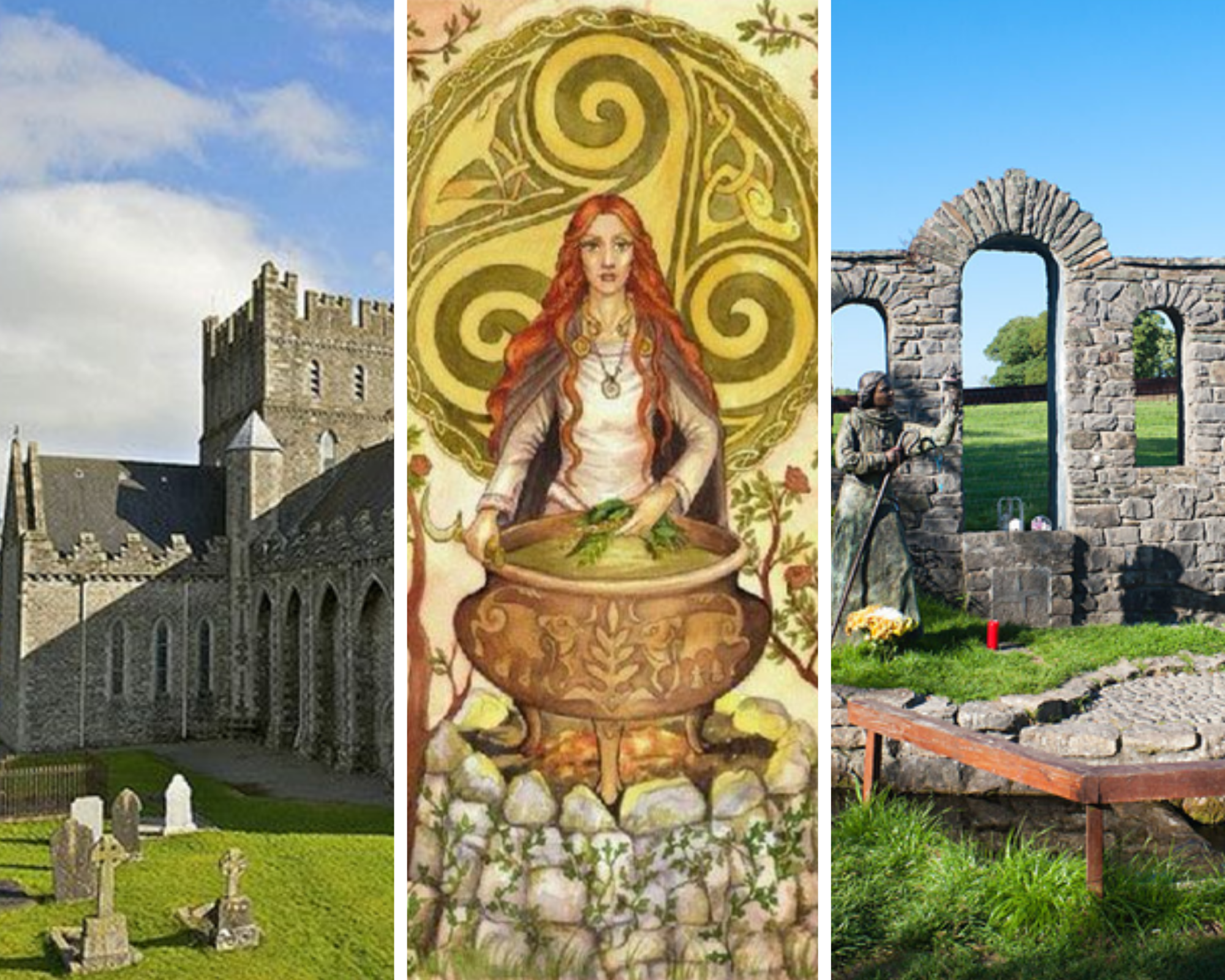There are a lot of spectacular places to see in Ireland at every time of the year; however, the Imbolc Festival or, in other words, Saint Brigid’s Day makes the fascinating nature of Ireland more special. It is celebrated on the 1st of February in the name of St Brigid, the first native saint of Ireland. Being a female saint, she is believed to live between 451- 525 and to be a disciple and friend of St Patrick, the patron saint of Ireland. She is famous for her kindness, miracles, unignorable mercy, and many charities. She also patronizes Irish nuns, newborn babies, cattle, and dairymaids.
Retracing The Origins of The Holiday
Although it is a Christian holiday, it originally comes from the Celt festival of Imbolc! Celtic people celebrated this festival on the same date as Christians do now, and interesting enough, they were celebrating it in the name of goddess Brigid. Being one of the most well-known and adored goddesses in the Celtic pantheon, Brigid (the elevated one) is the Dagda’s (father of all gods) daughter. Her approachable and friendly nature probably contributes to her appeal. She was a tripartite goddess, symbolized by three sisters, each serving a particular purpose. She was the patroness of poets, smiths, healers, artists and craftspeople, wells, springs, and childbirth. She was the goddess of civilization, culture, the hearth, fertility, and wisdom. The hag of winter is an elderly woman Brigid battles and defeats in connection with the spring festival of Imbolc. Brigid does this each year. She is linked to healing as well. Women in labor pray to her. Ruadan, her son, died in combat. The Irish custom of keening in remembrance was started by Brigid’s sobs at his passing.
Two Places to See, One Activity to Do!
Since Imbolc is a festival of welcoming the spring, all wells and every natural unit are dedicated to this festival. It is a celebration of every natural aspect’s rebirth, so everything you see is unique on this day. However, certain places are considered to be more holy and distinctive.
St Brigid’s Holy Well
Although it is now a modest, well-kept park, pardon the pun, the location nonetheless exudes an air of antiquity and is a mystical spot. A spring that originates underground and reappears beneath a stone archway supplies the well. St. Brigid’s slippers are the stones beneath the archway. The stream next passes beside a contemporary Saint Brigid statue made of bronze. On the day of my visit, the rag tree by the well was covered in clooties. The rags are typically hung there by individuals who think that by turning a piece of clothing from a person who is unwell or has a difficulty of any type from the tree, the disease or problem will pass as the rag decomposes.
Kildare Cathedral
St. Brigid founded Kildare Abbey, a historic monastery in County Kildare, Ireland, in the fifth century. It was destroyed in the 12th century, so even though we lost that structure, we still have St Brigid’s Cathedral to see. Her original home would have been a relatively plain building of wood. The name Cilldara, anglicized as Kildare, was derived from this settlement for the town and, much later, the country. Cill and Dara both refer to little churches or cells in Irish. It appears that the initial chapel was constructed next to an oak forest or perhaps was constructed entirely of wood.
Make a Saint Brigid’s Cross!
The Kildare-area pagan chieftain was in the process of passing away. His family’s Christians dispatched Brigid to speak with him about Christ. The chieftain was in a rage when she got there. At his bedside, Brigid took a seat and started comforting him. The dirt floor was traditionally covered in rushes for both cleanliness and comfort. Brigid knelt and began to weave them together, joining the points into a cross. “What was she doing?” the sick guy inquired. As she described the cross, his delirium subsided, and he started asking her more and more probing questions. He was converted and baptized at the brink of death via her weaving. Ireland has since had its version of the rush cross. Although it comes in various forms, the most common ones have a woven lozenge or diamond in the middle. Hanging Brigid’s crosses in the rafters or over building entrances was one of the traditions connected to Brigid of Kildare’s feast day. This was done to invoke the saint’s favor and protection for the rest of the year. On the night before Brigid’s feast day, on January 31, families would congregate in rushes. The crosses were placed outside for Brigid to bless them, and on February 1st, they would be hung in the main house, the outhouses, and the stables.



